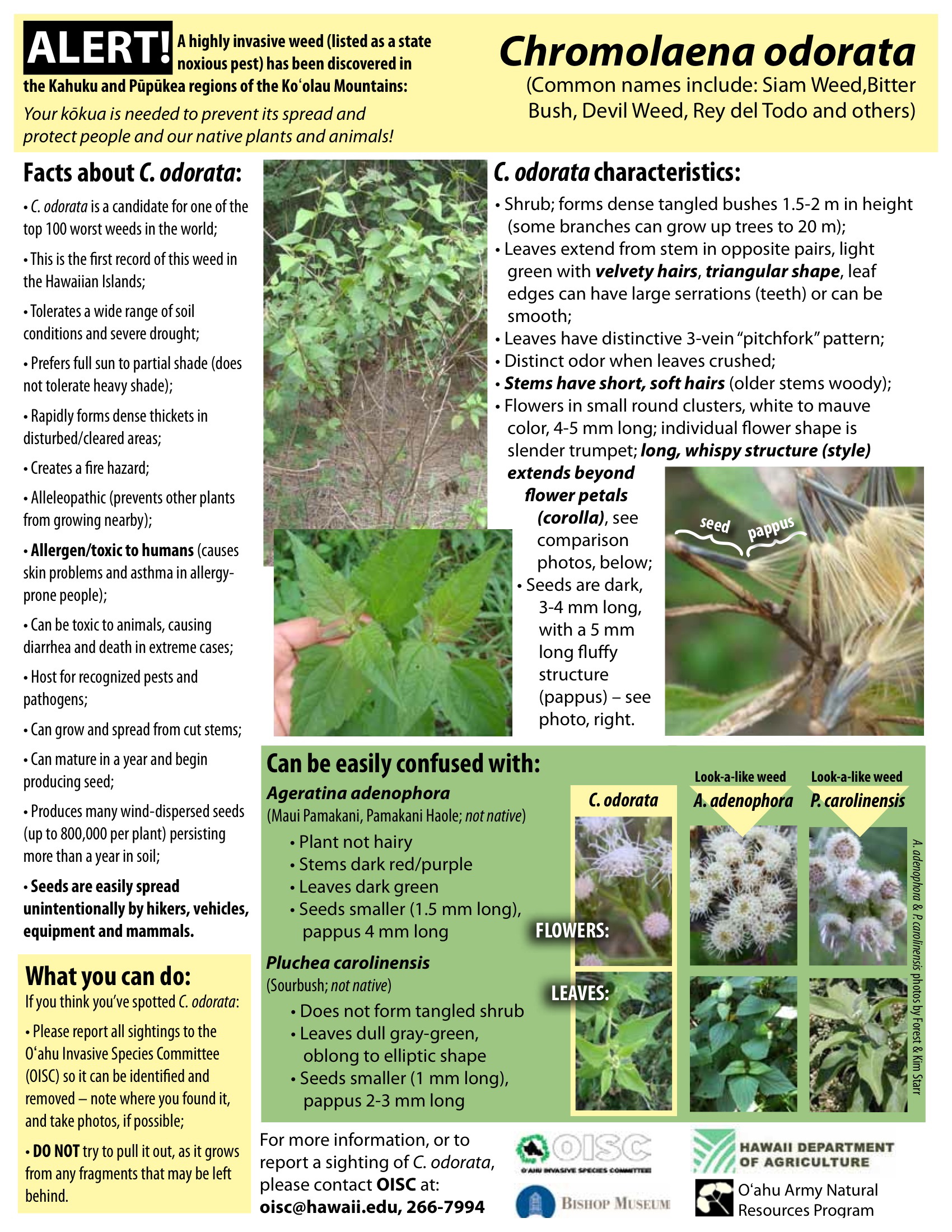Navy Plans for Biosecurity: A Regional Biosecurity Plan for Micronesia – broadly defined to include every island state from Hawai`i in the northeast to Micronesia in the southwest – has been released by the U.S. Navy and cooperating agencies.
The document runs to several hundred pages and is not so much a description of what will be done as it is of what should be done. It acknowledges that each jurisdiction “will need to develop specific details for action items they determine are practical, warranted, and feasible to enact.” Nor does the plan “set laws or regulations” or “define the responsibilities or obligations of any jurisdictions, agencies, or offices. Again, these elements are left for the appropriate authorities to determine.”
Nonetheless, the plan has great value as a catalogue of the dangers invasive species pose to island ecosystems, the efforts – successful and not – of responsible authorities to curb introductions of invasives, and the many government and private agencies within each jurisdiction whose responsibilities include the interdiction, eradication, or control of invasive alien species.
While the U.S. Navy took the lead in preparing the document, it gives credit for the initiative to Micronesia. “The Micronesia Chief Executives and their council on invasive species … have been in the forefront of regional [invasive alien species] work for almost a decade,” the plan states in its Executive Summary. After the Department of Defense announced plans for a massive relocation of military forces from Okinawa to Guam in 2007, concerns over increased threats of invasives were heightened. Although the scope of the relocation has since been scaled back, the Navy went forward with steps to address biosecurity regionally, culminating in the new plan.
The biosecurity plan, unveiled April 9, is available online: http://guaminsects.net/anr/sites/default/files/RBPC.pdf
State Releases Kilauea Ag Funds: On March 11, the state Agribusiness Development Corporation’s board of directors awarded the nonprofit Malama Kaua`i a $120,000 grant to pay for construction materials needed to develop the Kilauea Agricultural Park, a project anticipated decades ago.
“In the 1970s, when the Kilauea Sugar Mill closed, lands were sold off and we saw the development of gentlemen’s estates. In one of these deals, the community was supposed to receive 75 acres to support displaced plantation workers, and the Kaua`i community, so they could continue agricultural production. But since the ‘70s, the community has wrestled to get access to this land. After a 30-year battle, we finally got it,” Malama Kaua`i’s website states.
Malama Kaua`i is providing the funds for the project while the group `Aina Ho`okupu o Kilauea obtains its own nonprofit status “with the purpose to develop the site into a regional agricultural park and food shed as set forth by a master planning process as commissioned by the County of Kaua`i in 2008,” the website continues.
The Ag Park is intended to include both organic and conventional production farms, four acres of incubator farms, a farmers’ market, a 250-plot community garden, a three-acre composting and recycling center, and a 4-acre renewable energy park.
Our First Subscriber: Robert Merriam was working in the state Legislature as an aide to Rep. Virginia Isbell in the spring of 1990. That is when, in a completely unwarranted act of faith, he wrote a check for $25.00 to Environment Hawai`i, becoming our very first subscriber months before our first issue saw light of day.
For the next 25 years, Merriam continued to subscribe.
Last month, his son Keith called the office to cancel his father’s subscription. His father would not be reading Environment Hawai`i any more, he said. At age 87, Robert passed away April 1.


Leave a Reply